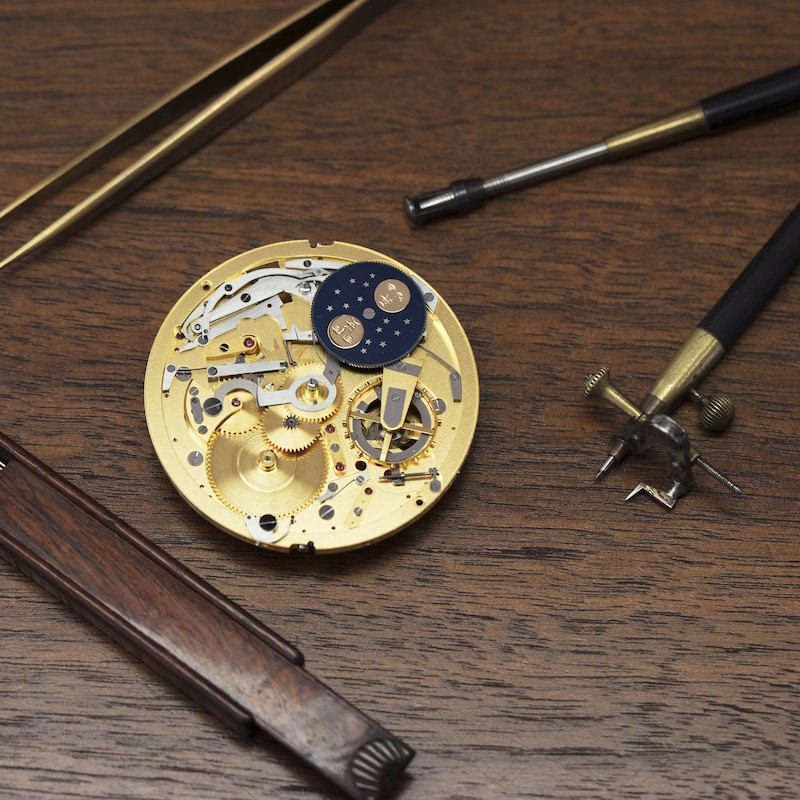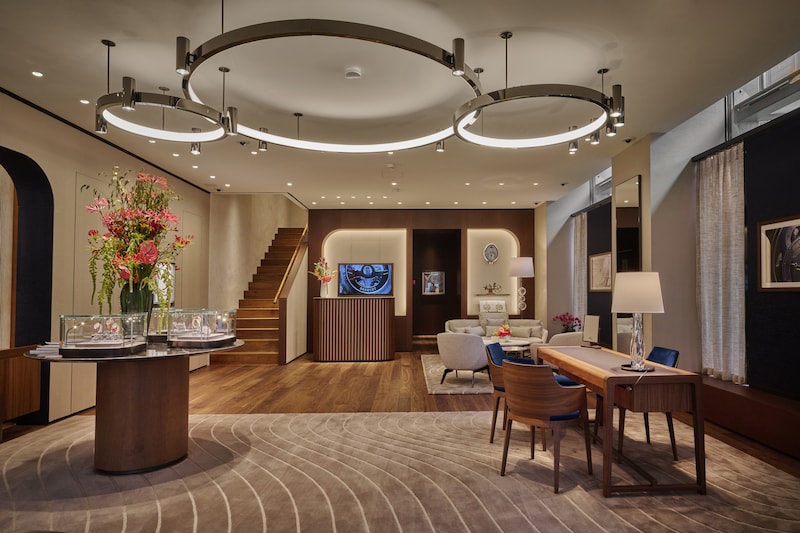Classique 7235
Collections ,

How did the fundamentals of the Breguet style originate? They are so deeply rooted in the Manufacture’s 250-year history that pinpointing a single origin is a daring endeavour. One watch, however, perfectly embodies them: the No. 5, delivered in 1794 – to which today’s Classique 7235 pays fitting tribute.
A tribute to the founding principles of the Breguet style
Breguet is far more than a name. It was a man with an incredible vision, a lineage, of avant-garde watchmaking, with instantly recognisable style – notably evident in the famous “Breguet hands” – that extends far beyond the Manufacture and is frequently copied. In this respect, the technological advances made by Abraham-Louis Breguet are as essential to contemporary watchmaking as his aesthetic codes – as is testified by the Classique 7235.
There is a historical irony that needs to be understood: the style invented by Abraham-Louis Breguet was anything but “classic” at the time, but instead profoundly disruptive and innovative. When he moved to Paris in 1775, clock and pocket-watch faces were dense, cluttered and brimming with baroque ornamental touches that were not necessarily unsightly but lacked both coherence and identity. Renaissance style was still clearly perceptible. English and French styles were distinct, while Swiss watchmaking had not yet found its feet.
Breguet went on to forge a universal watchmaking language, distinguished by finesse, elegance and legibility. It is timeless, as evident by the fact that its brilliance continues to illuminate the world of Haute Horlogerie 250 years later. A.-L.Breguet inspired neo-classical watchmaking and by himself distinguished the art of balancing the asymmetry of the indications on his creations.
Breguet’s approach to the dial reflected his technical inventions: comprehensive, unified, and consistent. He strove to improve horology from both technical and stylistic standpoints, eliminating anything superfluous and emphasising legibility. He proceeded by sectors, playing on distinct levels. Throughout a prestigious career spanning nearly 50 years of work, he maintained rigorous discipline and admirable constancy.
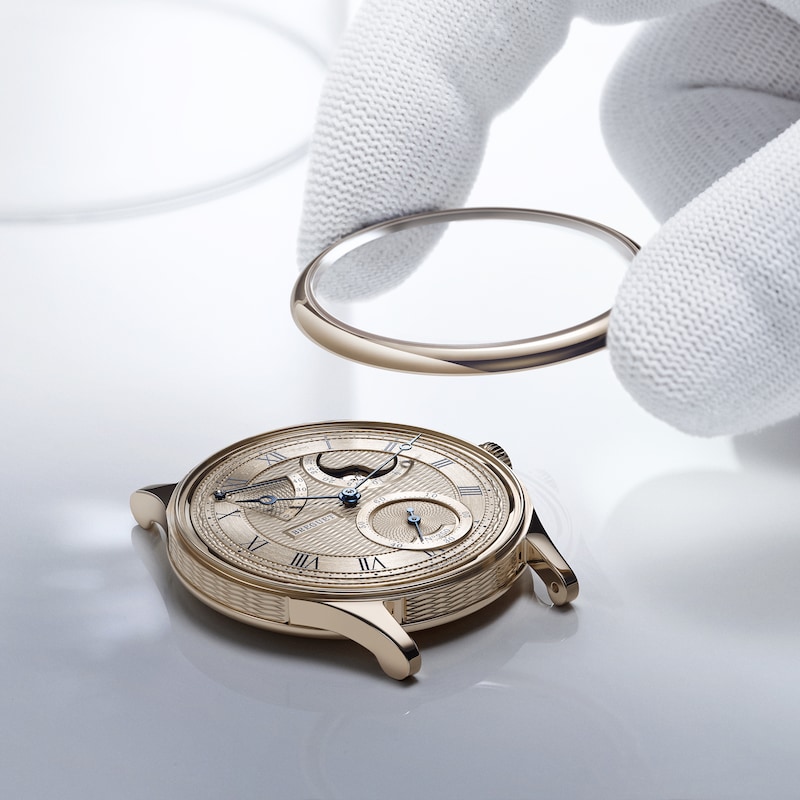
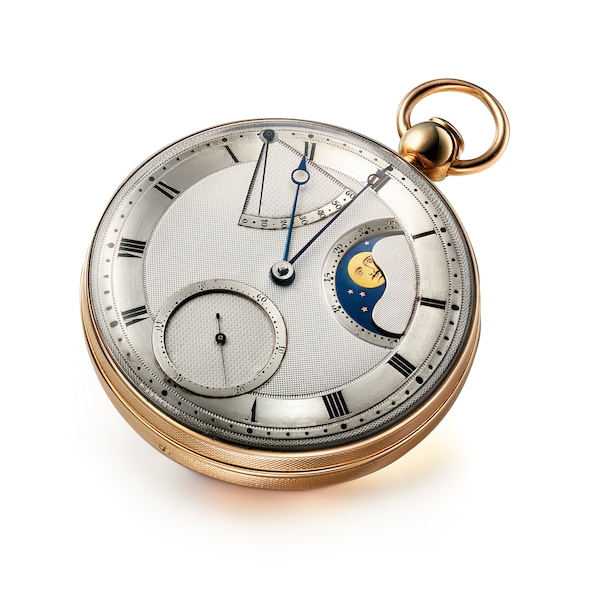
This is the style that is perfectly embodied in watch No. 5 delivered on 14 March 1794. An outstanding timepiece sold at the time to François Jourgnac Saint-Méard, a literary scholar renowned for his fine writing and was a contemporary of Breguet.
The Classique 7235 inspired by the No. 5 watch currently on display at the Breguet Museum on Place Vendôme in Paris.
It is not strictly speaking a reproduction, since the No. 5 was a pocket watch, a fact that entailed adjusting its proportions and creating a dedicated movement for this 250-piece limited edition.
A face, a signature
On the dial side, the timepiece echoes most of the complications of the No. 5 watch, as well as their general layout: two central hands, power reserve between 10 and 11 o’clock, moon phase at 2 o’clock and small seconds at 5 o’clock. At Breguet, complications have always been gracefully displayed on dials that are always different yet guided by the same sense of balance.
The small seconds, positioned between V and VI o’clock, is a nod to many of the house’s historical timepieces, on which the small seconds was rarely placed at VI o’clock. Sobriety and clarity never excluded a touch of whimsy.
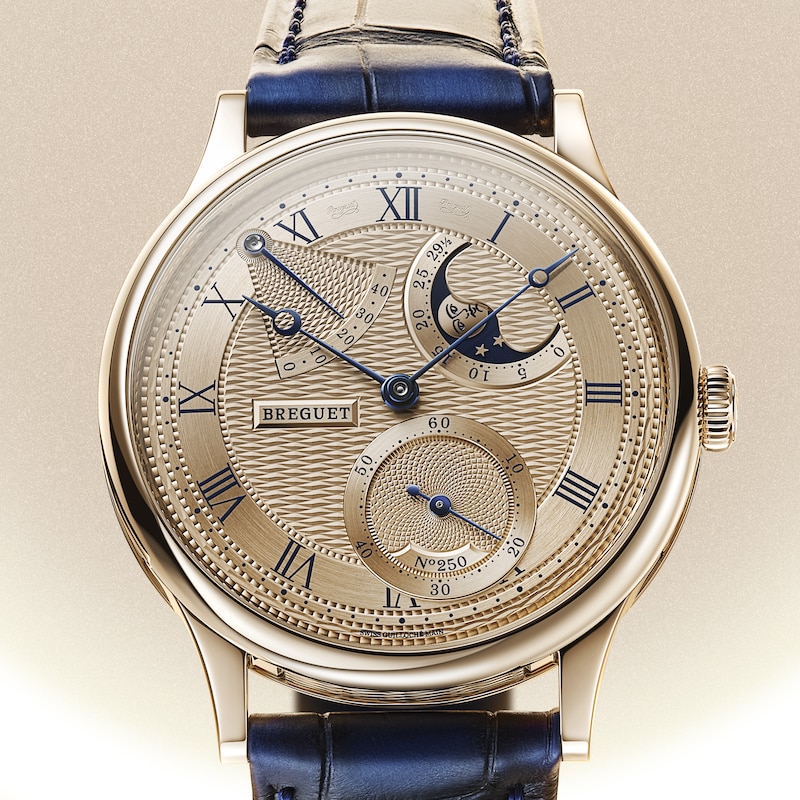
New in-house movement
In 2025 Breguet created a new calibre to power the Classique 7235: the 502.3.DRL equipped with a silicon balance-spring. Even before these complications, it is worth noting that this is a self-winding mechanism which is significant, since the 1794 No. 5 watch was also automatic.
Back in the day, this aspect was a technical revolution. A.-L. Breguet is truly the father of the perpétuelle watch, the ancestor of the contemporary self-winding watch. In 1790, the great watchmaker mentioned that he had been “working on it for 25 years”, which suggests that he had already begun to develop it around 1775.
The Breguet Museum currently holds the oldest known “perpétuelle watch”: the Breguet 1/8/82, completed in August 1782 and the only one that can formally attest to Breguet’s precedence in this field. The Classique 7235 now pays him the tribute he so richly deserves.
Calibre 502.3.DRL is remarkable slim, since despite its three additional complications animations (alongside the hours and minutes), it is less than 4 mm thick, at 3.95 mm (for a 32.4 mm diameter).
This thinness is notably made possible by an offset oscillating weight, a layout that opens up space for optimised distribution of the watch’s components, contributing to a case that remains below 10 mm thick, at exactly 9.9 mm.
All of which ensures a perfectly harmonious fit with 39 mm case diameter, the most sought-after size among serious collectors. The curved lugs are the same as those seen on the Souscription watch unveiled at the beginning of 2025.
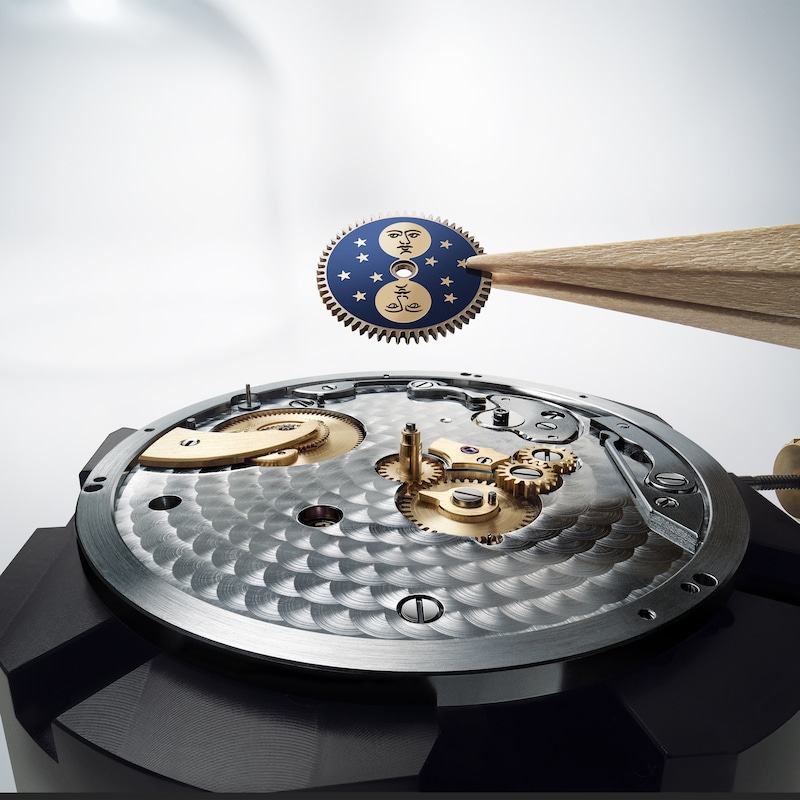
Peak finishes
To mark its 250th anniversary, Manufacture Breguet is steadily unveiling creations that place particular emphasis on finishing. The Classique 7235 is no exception. It is crafted in 18K Breguet gold. The same precious alloy also adorns the dial, which features a hand-guilloché “Quai de l’Horloge” motif, A.-L. Breguet’s historical address in Paris.
The small seconds and power-reserve sector, as well as the dial rim, feature the same pattern, but in a circular rendering, making it easier to tell them apart. They are separated from the straight guilloché by satin-brushed inserts that give the dial volume and greater clarity. The moon at 2 o’clock is an exact reproduction of the one featured on the N°5 watch of 1794. It is also made of Breguet gold. All these indications appear on a non-flat surface, since the Classique 7235 has a bevelled dial like that of watch No. 5. It is thinner at the edges than in the centre and while this difference amounts to just four tenths of a millimetre, it is enough to give the dial a slightly sloping profile at the edge of the chapter ring.
This enables a slimmer, lower bezel, ensuring a perfect junction with a spherical sapphire crystal ensuring just the right fit on the caseband. For the first time at Breguet, the case middle is hand-guilloché with the “Quai de l’Horloge” motif, replacing the famous fluting – meaning horizontally rather than vertically.
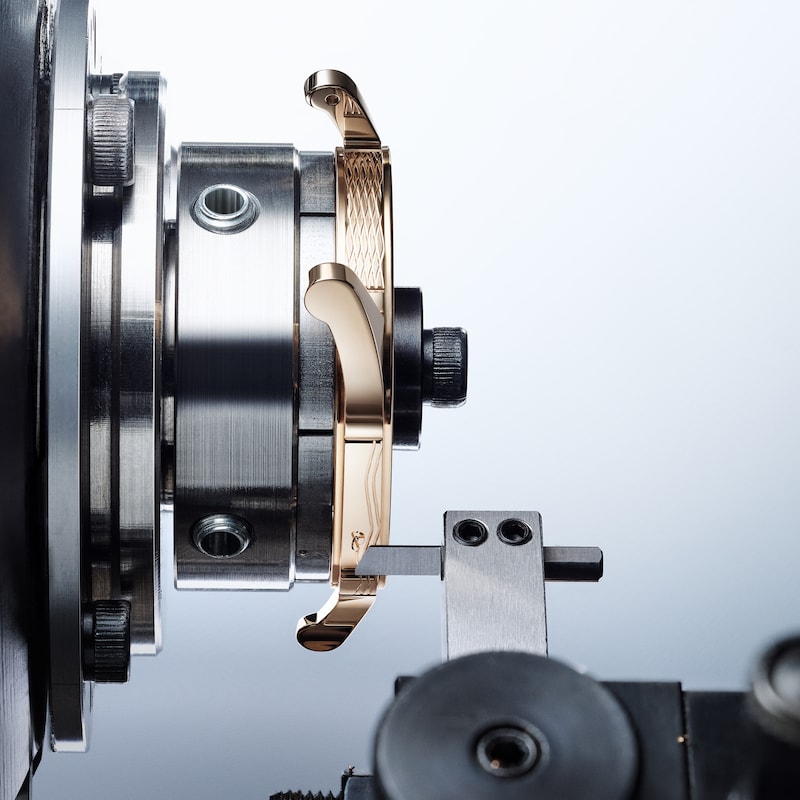
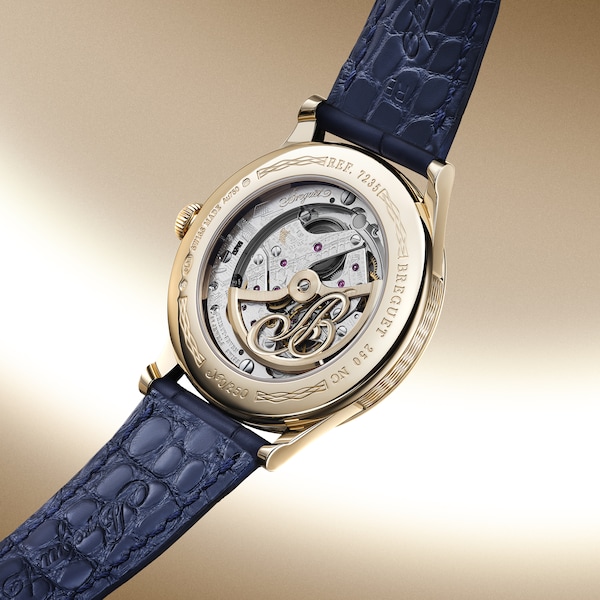
Reserved by the Manufacture for its exceptional timepieces, this treatment offers a view of a so-called “Turgot” map depicting the Quai de l’Horloge, where the maestro’s workshops were located.
The authors of this most famous map of Paris at the time were Michel-Etienne Turgot (not to be confused with the eponymous minister) who commissioned this watch and Louis Bretez, a member of the Academy of Painting and Sculpture. It covered an extraordinary surface area of 2.49 m × 3.18 m. Nearly three centuries after its creation, its incredible accuracy continues to fuel the collective imagination surrounding the City of Light.
The Breguet N°5
Watch No. 5 was delivered on 14 March 1794. This was a pivotal period in the life of A.-L. Breguet.
Since 1789, his trade with neighbouring England had been growing and he travelled there three times in as many years. Returning to Paris after his first trip to London, Breguet witnessed the French Revolution first-hand. It was even the first time he went beyond his strict role as a watchmaker, taking a clear stand in favour of profound reforms of the regime. But times were difficult, especially for Breguet, who was experiencing some difficulties in getting his customers to pay him – and even though business was good for him as such, the political climate was becoming tense.
On 12 August 1793, Abraham-Louis decided to return to Switzerland to protect himself from certain abuses that were bound to occur. Watch No. 5 was thus created directly by himself and was then delivered a few months later by Thomas Boulanger, who had joined the company in 1783. He ensured its daily operation by corresponding closely with Breguet, who remained in Switzerland. The latter did not return to France until the end of May 1795.
